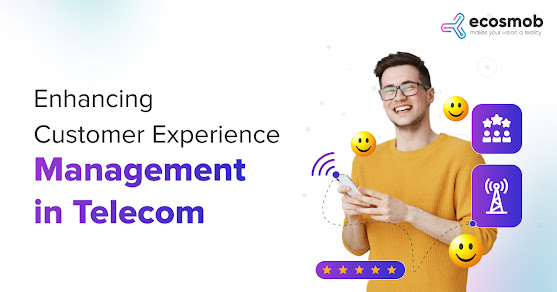Delving into how customers perceive your brand extends beyond product offerings to include the entirety of their journey with you.
In the dynamic realm of telecom and software-driven telecom solutions, customer experience management (CXM) is pivotal in elevating every customer interaction from satisfactory to remarkable and fostering loyalty in your customers.
What is CXM?
CXM in telecom transcends traditional customer service, focusing on crafting every interaction between your company and its customers to be seamless and positive.
It’s about ensuring every touchpoint contributes to a delightful customer journey, enhancing satisfaction, and fostering long-term loyalty through a deep understanding of customer needs and proactive engagement.
The Essence of Customer Happiness
True customer happiness stems from feeling understood and valued.
Personalization and anticipation of needs are central, especially with telecom companies needing to offer more than just plans but experiences tailored to individual lifestyles. This level of customization fosters a connection that makes customers feel uniquely appreciated.
Why CXM Matters in Telecom
With a significant portion of customers willing to invest more in companies that excel in customer experience, the importance of CXM in telecom cannot be overstated.
It's not just about retaining customers but transforming them into advocates for the brand, thereby enhancing the company's reputation and financial stability.
Building Blocks of Effective CXM
Building an effective CXM framework involves more than just technology; it requires a shift towards a customer-first culture across all levels of the organization.
From valuing customer feedback as a cornerstone for improvement to ensuring employees are engaged and motivated to deliver superior service–every aspect contributes to a holistic customer experience.
Implementing an Effective CXM System
Developing a robust CXM system starts with a comprehensive understanding of the customer journey and refining fundamental interactions to maximize satisfaction.
Integrating customer data effectively allows for a more personalized approach. And a continuous feedback loop ensures the strategy remains responsive and adaptive to customer needs.
Measuring CXM Success
Beyond traditional metrics like Customer satisfaction scores (CSAT) and Net Promoter Scores (NPS), delving into deeper measures such as Customer Effort Score (CES) and Customer Lifetime Value (CLV) provides a more nuanced understanding of the CXM's impact.
Regularly assessing these metrics enables businesses to refine their strategies, ensuring they remain aligned with customer expectations.
CXM Pitfalls to Avoid
A common misstep in CXM is the lack of integration across different departments, leading to disjointed customer experiences.
Furthermore, an over-reliance on automation without maintaining a balance with human interaction can diminish the personal touch that is often critical in building strong customer relationships.
The Role of Technology In CXM
Technology is an enabler and a transformer of customer experiences in the telecom sector.
For example, in the telecom sector, advanced tools like sentiment analysis allow for a deeper understanding of customer emotions and needs, predicting them before they arise. AI-driven chatbots offer instant, efficient support, ensuring that your customers get timely assistance whenever needed.
From leveraging analytics for deeper insights to employing AI for real-time support, technology is critical to staying ahead of customer expectations and delivering solutions that resonate on a personal level.
Leverage the latest technology to elevate your Customer Experience Management system with Ecosmob. Our tailored telecom solutions are designed to keep your customer base engaged and connected, setting your business apart!
The Future of CXM in Telecom
As technologies like 5G and IoT become more prevalent, the potential for creating interconnected and personalized experiences is vast. The future promises telecom services that meet but anticipate your customer’s needs, offering seamless integration into the fabric of daily life.
Conclusion
CXM in the telecom industry is a comprehensive approach that requires embedding a customer-centric ethos across every operational facet.
It's about seizing each interaction as an opportunity to demonstrate a commitment to excellence, ensuring that the customer journey is not just connected but enriching and memorable!
About Ecosmob
Ecosmob Technologies provides the service of hiring expert VoIP developers to design and develop an array of business communication solutions. With the right blend of expertise and decade-long experience, developers can deliver the ultimate business telephony solutions, and MVNO solution development services to enhance productivity and efficiency. Ecosmob provides flexible hiring models to help businesses cater to their requirements according to their needs and budgets.
To know more visit: https://www.ecosmob.com/
Original Source: https://www.ecosmob.com/customer-experience-management-telecom-guide/









